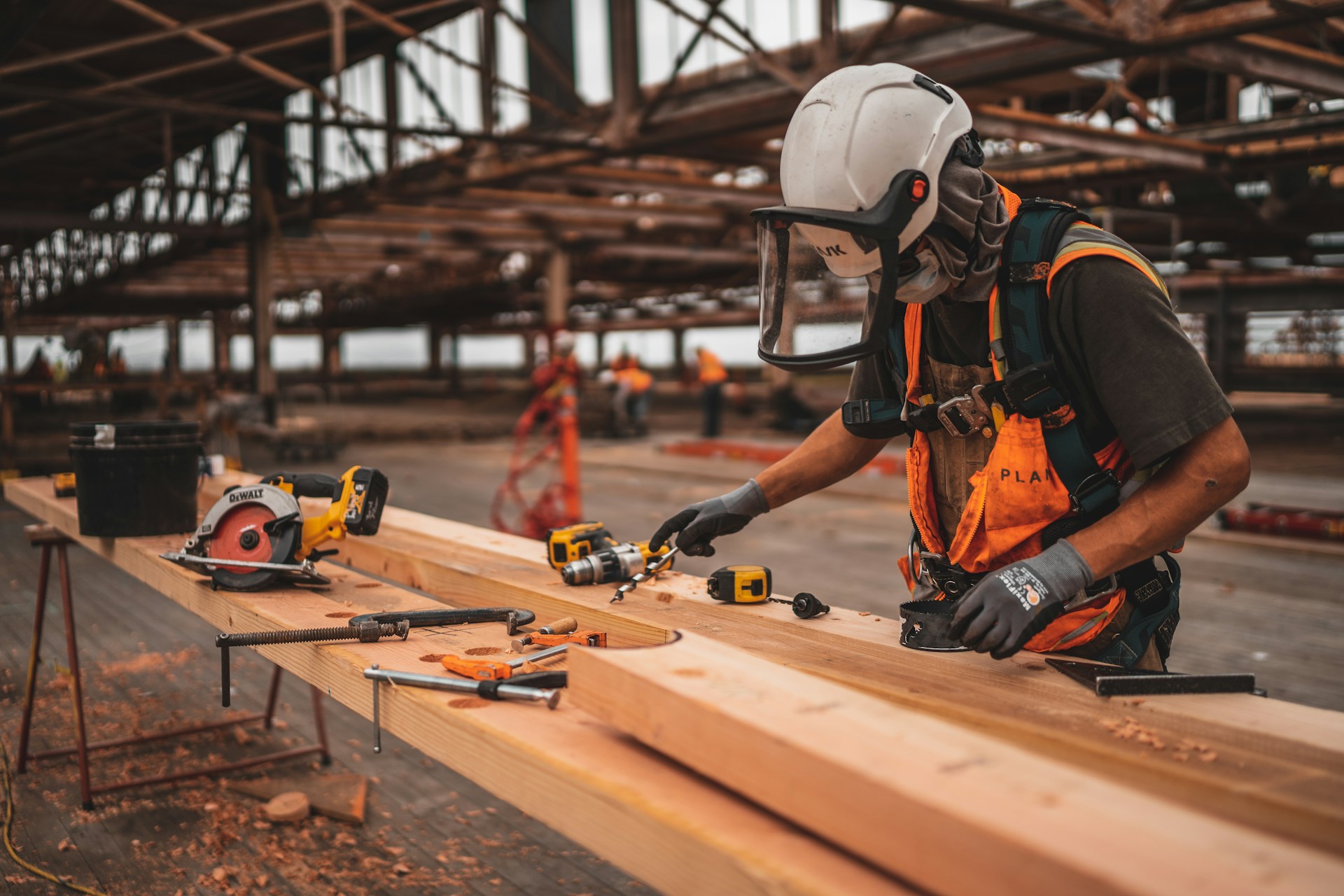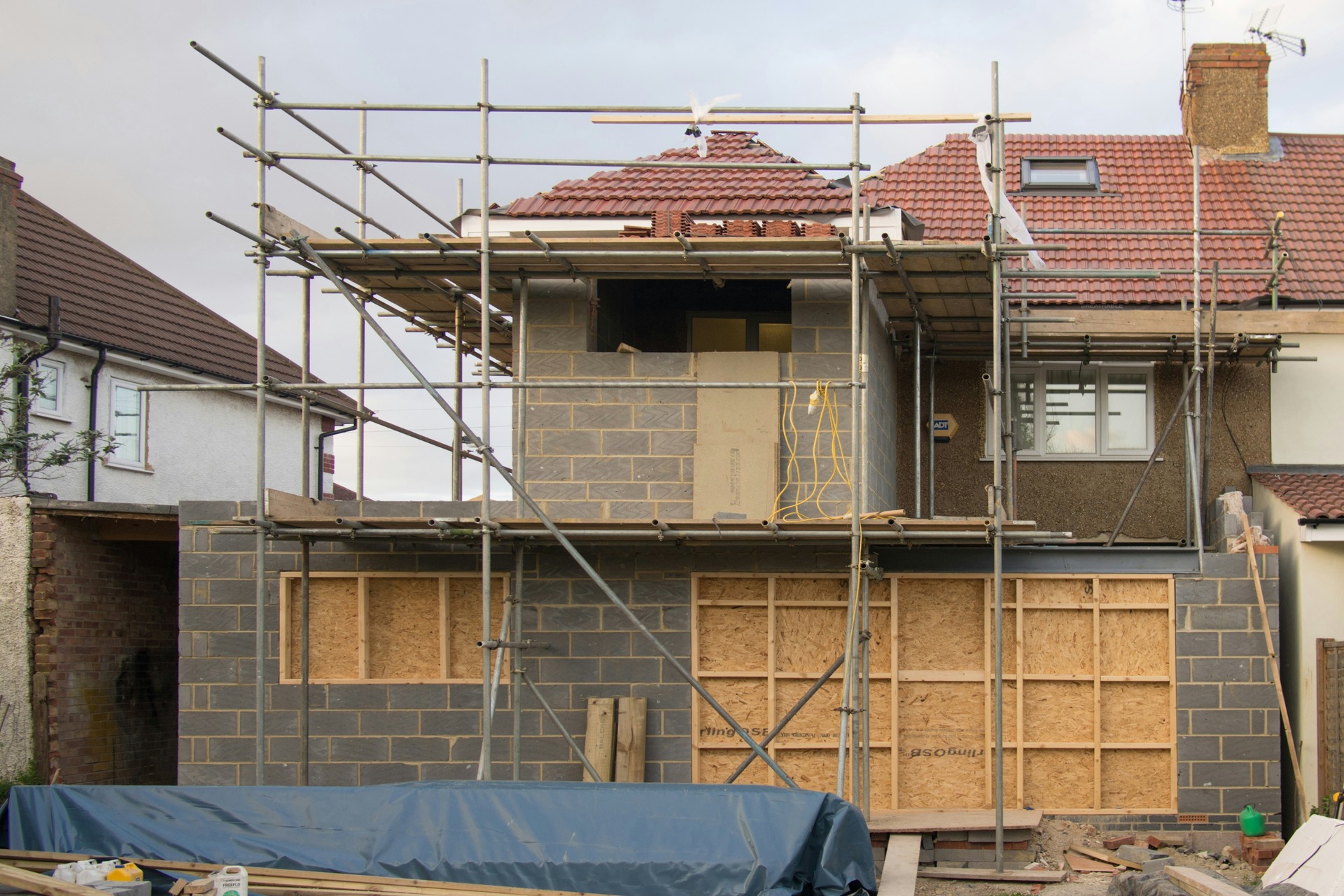
Interesting Features Of Recycled Houses You Probably Didn’t Know About
August 9, 2022 - Ellie Gabel
Revolutionized is reader-supported. When you buy through links on our site, we may earn an affiliate commission. Learn more here.
These features of recycled houses show that people can live in harmony with their surroundings.
People will always need places to live, but traditional construction isn’t good for the environment. Recycled houses present a solution that supports the planet without compromising what anyone needs from their living space.
Keep reading to learn what makes recycled homes more common, more affordable, and greener than other types of residential construction.
Recycled Houses Are Becoming More Popular
Climate change is warming the planet, resulting in more frequent natural disasters and intensified global challenges. A recent study found that 80% of people globally want to make positive lifestyle changes to help fight climate change, likely because it’s affecting people’s everyday lives more than in previous years.
Given how much time people spend at home, it’s important for that residential structure to align with their green values. Many people are part of the 28,000 zero-energy homes in the U.S. that eliminate electricity usage, but those house plans and apartments can be costly.
Recycled houses are more budget-friendly because the materials are easy to produce. They also include a few extra benefits for homeowners who care about the environment.
Benefits of Building Recycled Houses
Future owners of recycled houses can look forward to enjoying these benefits, no matter what floorplan they choose to build. Sustainable materials support each other and the property’s online sustainability by making these benefits possible long-term.
They’re More Cost Effective
Any companies that make products without using recycled materials have to create everything from scratch. That requires natural resources and extra electricity for the extensive production process. Felling trees, drawing water, and burning resources like fossil fuels are integral to standard production practices.
All of those factors work against homeowners who want budget-friendly construction materials that also align with their green values. Recycled materials use what’s already available in the form of pollution, so the only extra cost for companies is whatever they need to pay for collection.
It’s always more cost-effective to build recycled houses because the many companies that supply construction materials don’t have to make every material before putting their product together. They only need to harvest pollution from the environment to make essential supplies like roofing or siding materials and with the growing number of innovations in the AI field, production times could potentially be faster than the manufacturing of traditional materials
They Reduce Construction Waste
The U.S. creates over 600,000 tons of construction waste annually and the World Bank Report estimates that global construction waste will jump by over 3.4 billion tons over the next 30 years. It’s a significant source of pollution that harms the environment. It even adds to carbon dioxide (CO2) in the atmosphere because every pound of unwanted waste needed electricity and natural resources during production.
Choosing recycled housing supplies removes that waste if homeowners want reclaimed goods. They’ll also prevent their property from adding construction pollution by being conscious of how every part of their home comes together.
Eco-friendly construction materials also fit precisely to each person’s order. There won’t be excess waste like crumbling concrete or wood shavings that make local landfills fuller.
They’re Equally Durable
Homes should last decades before needing extensive repairs. Sometimes people think recycled materials are less durable because they aren’t brand new, but that isn’t true. Companies that offer reclaimed or reused parts necessary for residential construction ensure that every material receives extensive treatment and undergoes inspections to ensure it lasts a long time.
Most Important Features of Recycled Houses
Anyone who wants to learn about recycled houses should start by investigating potential materials they could use for their future home. These are some of the most commonly used supplies for residential structures of all types.
1. Recycled Fiber Cement Panels
Cement requires excessive amounts of water and rock. Recycled fiber cement panels reuse what already exists to form housing that stands the test of time. These panels are non-flammable and last for 50 years or longer without using more natural resources that are impossible to replace.
Homeowners can use them for modern architecture with exposed cement walls and exterior paneling or lay them as the foundation of their future house. A person’s chosen builder can work with them more closely to find ways to make cement panels fit into their building plans.
2. Plastic Bricks
Using more plastic to build a home may seem like the opposite of constructing a sustainable house. The current rate of plastic production is “incongruent to planet Earth,” says Stiv Wilson, director of campaigns for The Story of Stuff Project. So what’s the point of making materials like plastic bricks?
Plastic bricks utilize existing plastic waste to support residential and commercial construction. Production companies melt the plastic down and mold it into custom shapes and sizes. Homeowners can even order them in colors that resemble traditional bricks so their sustainable home doesn’t look different than others in their neighborhood.
3. Natural Bark Siding
Houses use wood for everything from their framing to cabinetry. When companies process wood for those home features, they shave the bark off and toss it into landfills.
People may think that bark is a suitable form of waste because it naturally biodegrades. Although that’s true, it’s still wasting part of the trees removed from the environment for a single use.
Green construction companies now use those shavings to make natural bark siding. It completes the exterior design for cabins, log mansions, and even roofing shingles. Anyone interested in this type of construction can consider bark as their siding material to avoid plastic siding or unsustainable construction supplies.
4. Recycled Glass Tiles
Americans get rid of 10 million tons of glass each year, which creates excess waste in landfills that doesn’t naturally break down. Recycling companies can take that glass and melt it down before constructing it into tiles for residential properties.
Glass tiles may create custom window fixtures, skylights, or floors in future homes. People even use them to finish countertops and tables before moving into their new houses. It’s an essential material in residential construction that doesn’t result in skyrocketing down payments or expanded carbon footprints.
5. Unfired Clay Bricks
Conventional bricks have to undergo a firing process before reaching construction sites. The fires either destroy forests by requiring wood or produce CO2 pollution by burning coal and gasoline.
Unfired clay bricks just need time to dry before they’re ready to build a house. They’re easy to make, too, which results in more jobs in underserved communities and those affected by natural disasters intensified by climate change.
Clay bricks also regulate the internal temperature of homes more easily than traditional bricks. Air conditioning units will use less electricity to keep everyone comfortable and minimize the property owner’s carbon footprint.
6. Newspaperwood
Newspaperwood is another way to avoid traditional means of acquiring lumber for building homes. Manufacturing companies gather old newspapers and coat every sheet with glue. They roll those sheets into tight logs and treat them with the same supplies as any other wood materials.
Newspaperwood production aims to support the environment, so the glue is most often free of plasticizers. Interested parties can use this recycled material as flooring and still have the appearance of wood planks without harming any trees.
7. Reused Cork Flooring
Cork is a natural resource, but it quickly replenishes itself. After an initial growth period of at least 20 years, people can harvest cork bark from trees and return for another harvest 9 years later. The trees continue to grow in between each season and have a minimal environmental impact because they don’t need much water.
Many homeowners are choosing to use cork as their primary flooring material because it’s so eco-friendly. It’s also soft, so it’s easier on the joints for anyone who wants to age in place. Cork also provides the bonus of repelling water. Homeowners won’t see gradual water damage cause plank separation after years of use as they would with traditional wood floors.
8. Plasphalt
Asphalt is a common ingredient in residential construction. It most often creates driveways and sidewalks, but it can also become part of a home’s foundation if deemed necessary. It depends on the environment surrounding a person’s property and how much weight the asphalt needs to support.
Asphalt requires sand and gravel to bind correctly. Sand use has tripled over the past 30 years, making it a limited natural resource. Eco-friendly construction companies now replace those ingredients with plastics harvested from landfills or highly polluted environments.
By breaking them down into small pieces, the plastic transforms into the key binding material for asphalt without making homes look any different.
9. Recycled Rubber Shingles
Shingles typically use environmentally harmful materials like asphalt to protect homes from weather damage. Recycled rubber shingles are a sustainable alternative for people building recycled houses.
The shingles use rubber that’s already in landfills or destined for waste sites. After melting it down into the correct shape and width, roofing companies can use it to complete residential and commercial construction projects.
It’s easily customizable and often more affordable than shingles made from scratch, so homeowners may want to consider it while planning out what they’ll need for their new houses. The only factor homeowners should consider is their local weather. Extreme heat may warp low-quality shingles, enforcing the need for high-quality roofing in certain areas.
10. Upcycled Wood Waste
Reclaimed wood isn’t just a trendy decor option for furniture and shingles. It’s also a viable building material for recycled houses. Interested homeowners can source their wood with their preferred builder to seek local unwanted wood for flooring, siding, and even framing.
This type of waste often comes from demolishing houses and other buildings. Homeowners may more easily secure more upcycled wood by consulting with demolition teams before the work happens. Otherwise, the material will end up in a landfill with a designated section for construction waste.
Experts can easily treat reclaimed or upcycled wood to make it look ageless. The right sealant and a potential new stained color could make any home look brand new without using limited natural resources.
Examples of Recycled Houses
Flexibility is another benefit of recycled house plans. Builders can incorporate sustainability into any type of living space. These are a few examples of inspiring recycled houses.
Single-Family Home: The Bark House
Anyone struggling to picture bark as their siding can look to the Bark House for inspiration. It combines stone and bark for the exterior materials, but only the bark wraps around the entire structure. It’s an excellent use of discarded natural resources to create a mountainside aesthetic.
Condominium: The West
Recycled houses aren’t always standalone structures. The West in New York City uses a new type of brick made of construction debris that was previously in landfills. The bricks insulate the building better than traditional alternatives and have a minimal environmental impact because they don’t need natural resources to exist.
Single-Family Home: The Cork House
Cork is an optimal recycled material for flooring in homes, but the Cork House owners use it for much more than that. Interlocking joints link the 1,268 cork blocks together and ensure the property produces 15% of the carbon dioxide emissions compared to a traditional home. Cork is such a durable, high-quality material that it can comprise the entirety of a house without compromising the building’s integrity.
Multi-Generational Family Home: The Shipping Container Home
Shipping containers are another way to make a recycled house unique to the homeowner’s design preferences. The Shipping Container Home has industrial and rustic elements for a modern look that doesn’t hurt the planet. All the materials for the multi-story home with 25-foot ceilings utilize materials that would have been in landfills otherwise.
Single-Family Home: The Casa BF
Daniel Fromer built a home made almost entirely of reclaimed materials for a large family. He made wood the central connecting design theme without hurting forests by purchasing new lumber. The reclaimed wood shingles and the home’s positioning also reduce the homeowner’s air conditioning usage by directing natural airflow through the house to cool everyone off.
Features of Recycled Houses: What’s Next?
Recycled houses are the way of the future, but they’re also a possibility right now. Combining eco-friendly and upcycled materials makes any construction plan more sustainable. Future homeowners can build their dream house without harming the environment by considering these essential materials and factors while setting up their project with a builder.
Revolutionized is reader-supported. When you buy through links on our site, we may earn an affiliate commission. Learn more here.
Author
Ellie Gabel
Ellie Gabel is a science writer specializing in astronomy and environmental science and is the Associate Editor of Revolutionized. Ellie's love of science stems from reading Richard Dawkins books and her favorite science magazines as a child, where she fell in love with the experiments included in each edition.






